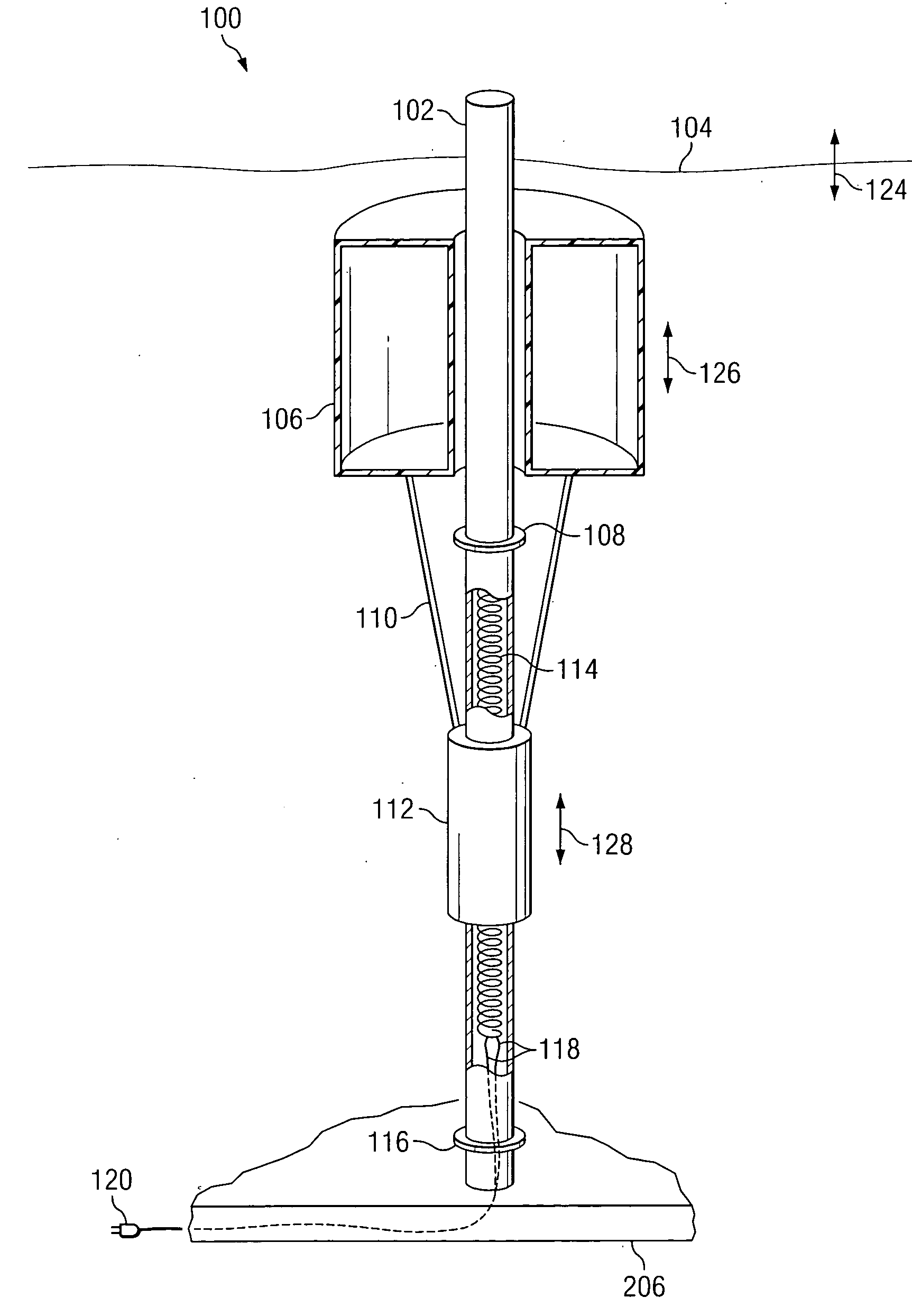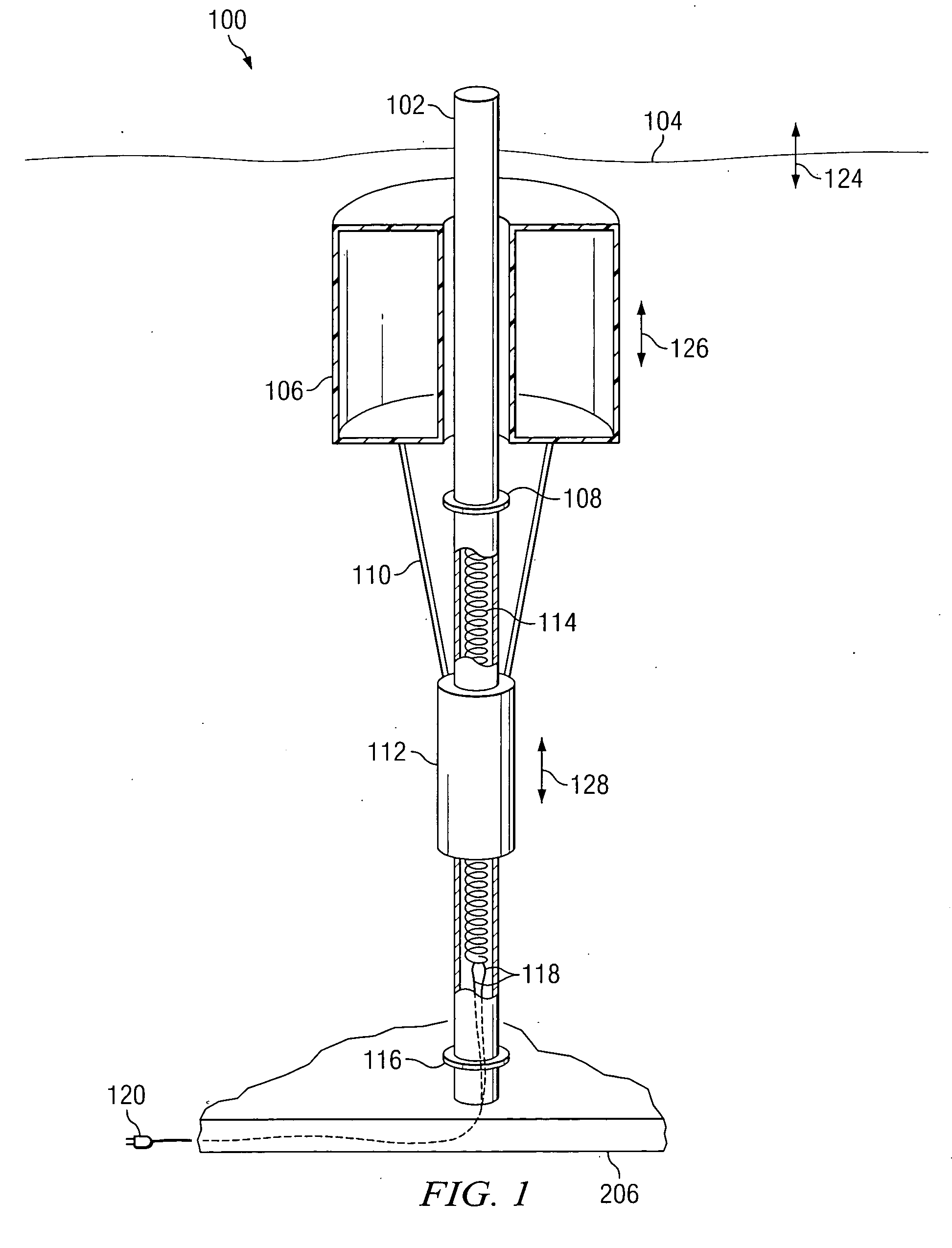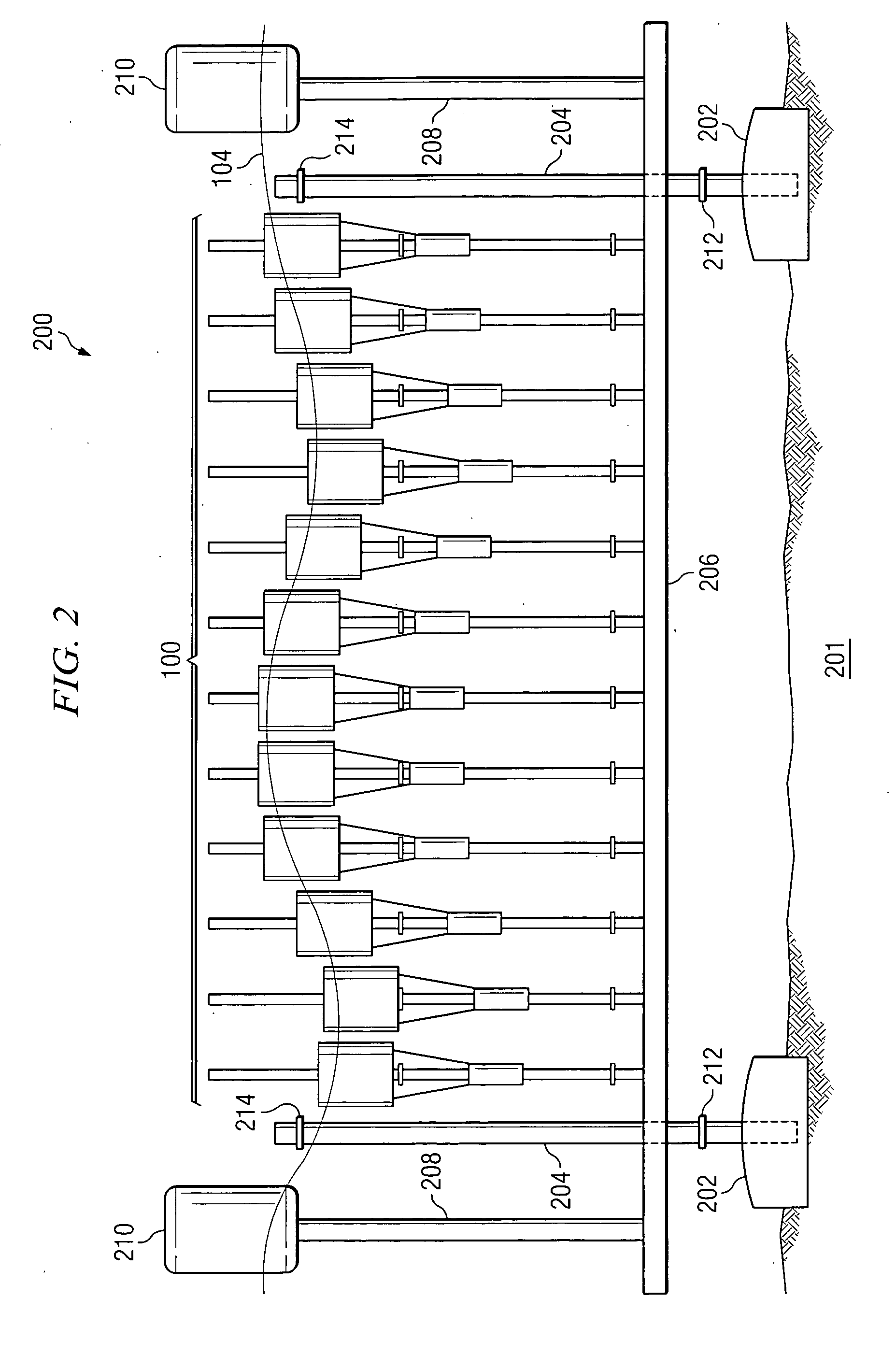Wave energy conversion system
a wave energy and conversion system technology, applied in the direction of electric generator control, machines/engines, mechanical equipment, etc., can solve the problems of large installation capacity, general disenchantment in the viability of wave energy conversion, and the inability to meet the requirements of large-scale operation,
- Summary
- Abstract
- Description
- Claims
- Application Information
AI Technical Summary
Benefits of technology
Problems solved by technology
Method used
Image
Examples
Embodiment Construction
[0085] Referring now to the drawings, wherein like reference numbers are used to designate like elements throughout the various views, several embodiments of the present invention are further described. The figures are not necessarily drawn to scale, and in some instances the drawings have been exaggerated or simplified for illustrative purposes only. One of ordinary skill in the art will appreciate the many possible applications and variations of the present invention based on the following examples of possible embodiments of the present invention.
[0086] With reference to FIG. 1, a wave energy conversion device 100 in accordance with the preferred embodiment is shown. The wave energy conversion device 100 includes a generally vertically positioned central wave displacement axle 102.
[0087] The central wave displacement axle 102, in accordance with the preferred embodiment, is a hollow rigid pole. The diameter of the central wave displacement axle will typically be about one inch, ...
PUM
 Login to View More
Login to View More Abstract
Description
Claims
Application Information
 Login to View More
Login to View More - R&D
- Intellectual Property
- Life Sciences
- Materials
- Tech Scout
- Unparalleled Data Quality
- Higher Quality Content
- 60% Fewer Hallucinations
Browse by: Latest US Patents, China's latest patents, Technical Efficacy Thesaurus, Application Domain, Technology Topic, Popular Technical Reports.
© 2025 PatSnap. All rights reserved.Legal|Privacy policy|Modern Slavery Act Transparency Statement|Sitemap|About US| Contact US: help@patsnap.com



